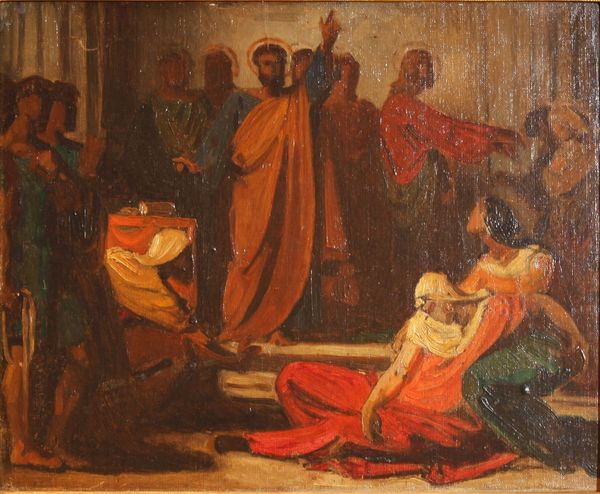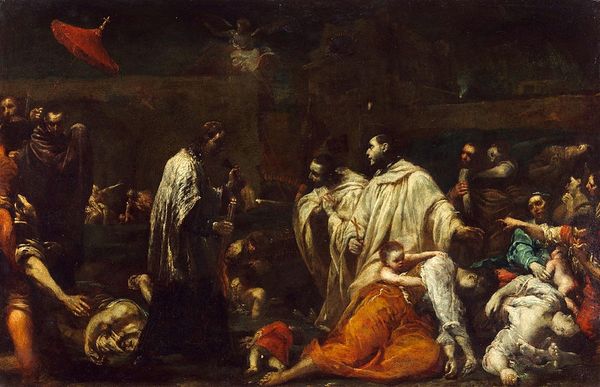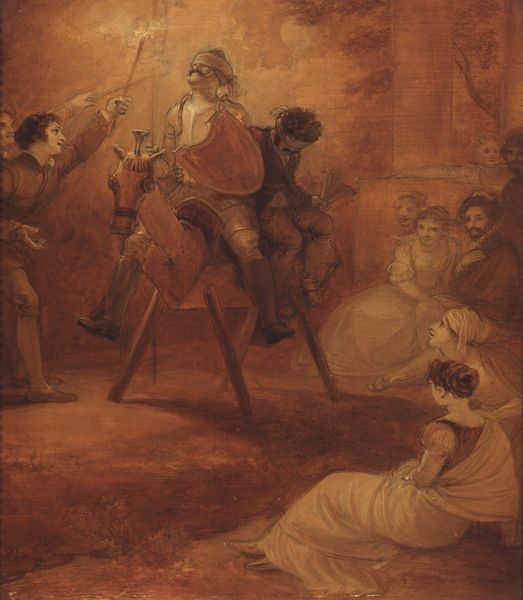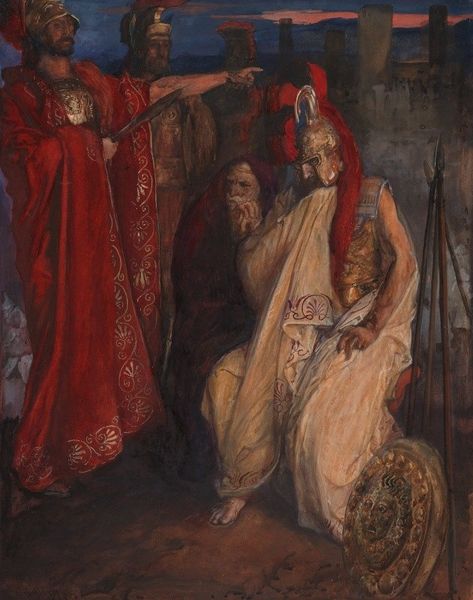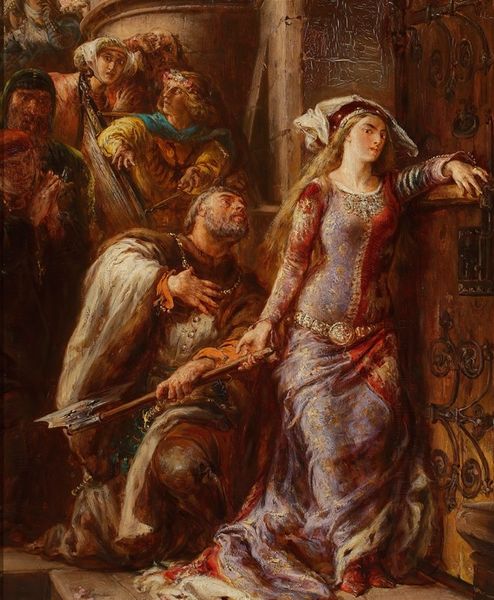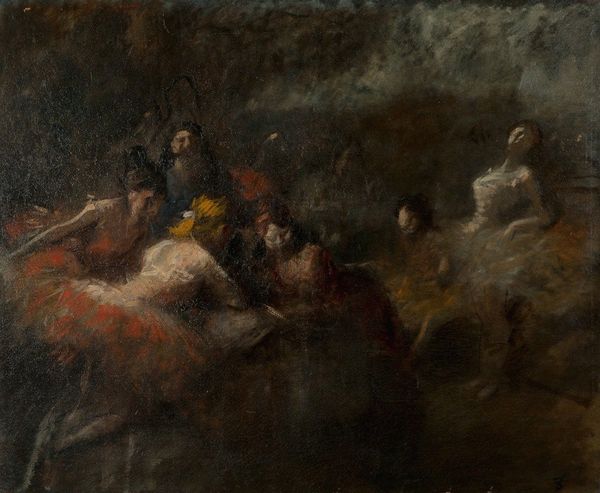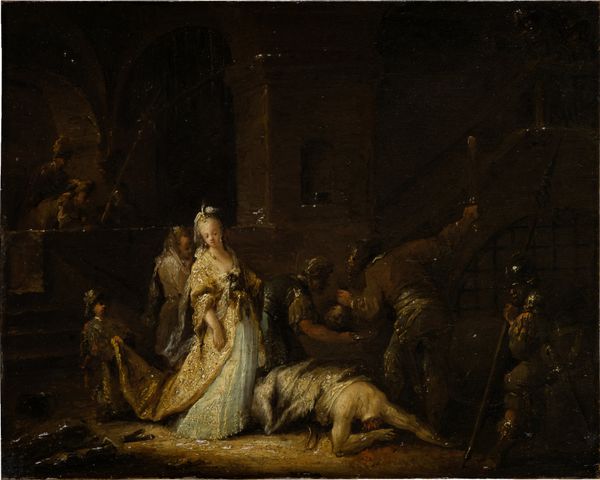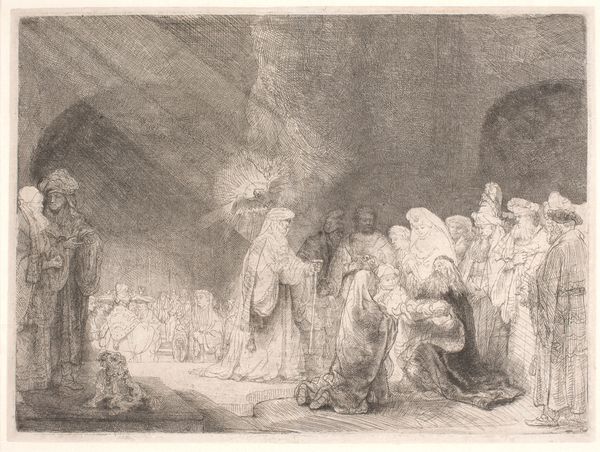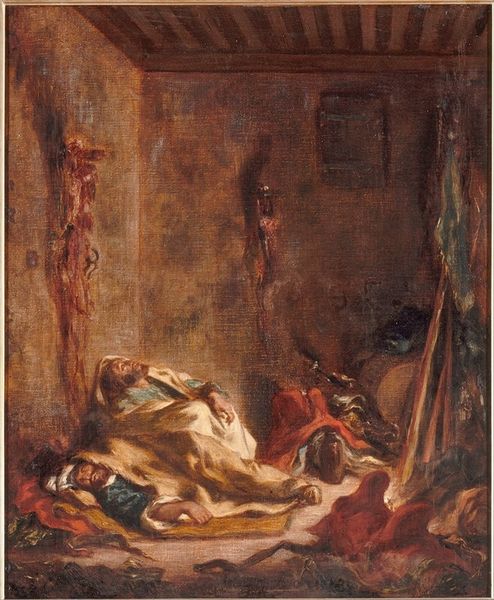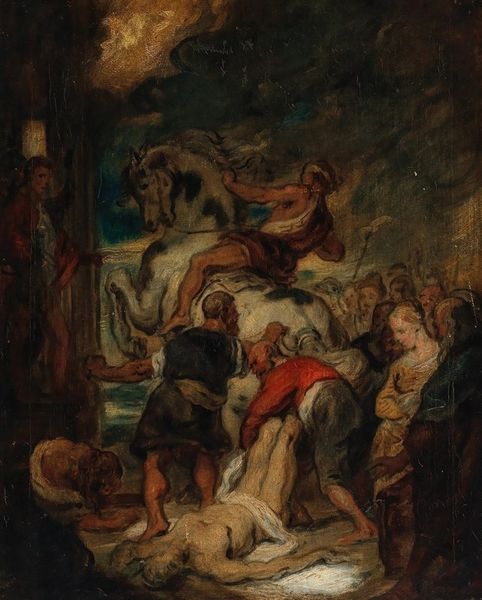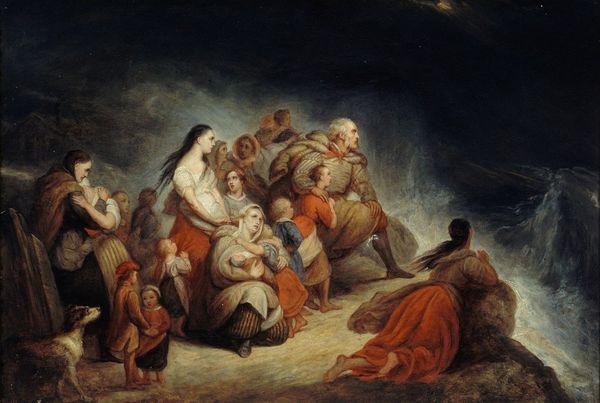
painting, oil-paint
#
figurative
#
narrative-art
#
painting
#
oil-paint
#
figuration
#
oil painting
#
romanticism
#
history-painting
#
academic-art
#
watercolor
Copyright: Public Domain: Artvee
Curator: This painting absolutely screams melodrama. All that frantic gesturing—what's going on? Editor: Well, this is "Elgiva seized by order of Archbishop Odo," an oil on canvas created in 1847 by Sir John Everett Millais. It's rooted in a complex narrative of power, gender, and political intrigue from early English history. Curator: Right. Because at first glance, I’m really struggling to find an emotional connection. Everyone seems to be caught in such a state of frantic gesturing. How does Millais want us to consider Elgiva's place within the frame of justice and faith? Editor: Absolutely, but look closely at how he renders the textures. The drapery around Elgiva’s limp form, for example, practically begs to be touched. We can think of Millais’s choice of oil paint, not merely as a vehicle for representation, but a conduit to feel and understand Elgiva's dispossession. Curator: So, considering your point, it’s relevant that Millais was associated with the Pre-Raphaelite Brotherhood, a group which challenged the dominant academic style. "Elgiva seized by order of Archbishop Odo" acts as a lens through which we view intersecting narratives of gender, class, and agency. Editor: Yes, that impulse to challenge norms definitely carries through in the physical making, too. Look at the dramatic contrasts he employs, shifting our gaze across scenes of violence and despair. These stark differences don't just represent reality, but construct an affective landscape tied directly to the physical processes behind its construction. Curator: So the making and the political message intersect? Editor: Precisely. By scrutinizing the techniques—the pigment mixing, layering, and brushwork—we can decipher the latent power dynamics, social relationships, and ideologies embedded in each stroke. The forced removal of Elgiva reflects real social dispossession. Curator: Thinking about it, by drawing attention to that act, the artist highlights a broader socio-political statement about the role of women in patriarchal power structures. Millais invites us to critique such injustice by placing Elgiva’s narrative within the social issues still pertinent today. Editor: And those lingering connections show that even in depictions of the past, the material tells a very modern story about how art can address social anxieties in any era. It highlights both its unique production and the broader world of power.
Comments
No comments
Be the first to comment and join the conversation on the ultimate creative platform.
